Photo story (Clockwise from top left): (1) A Lockheed P-38 Lightning in flight (2) A Lockheed P-38 Lightning of AAF Orlando Base, Florida is carrying two 1,000 lb bombs as part of a capability test in March 1944 (3) Another P-38 Lightning in flight (4) View of the cockpit of a P-38G
It was called ‘der Gabelschwanz Teufel or fork tailed devil’ by the Nazi Air force Luftwaffe and ‘Ni hikoki ippairotto or two planes, one pilot’ by the Japanese. Lockheed P-38 Lightning was developed according to a U.S. Army Air Corps requirement and was introduced in 1941. A single central nacelle contained the armament and the cockpit and the distinctive twin booms defined the P-38.
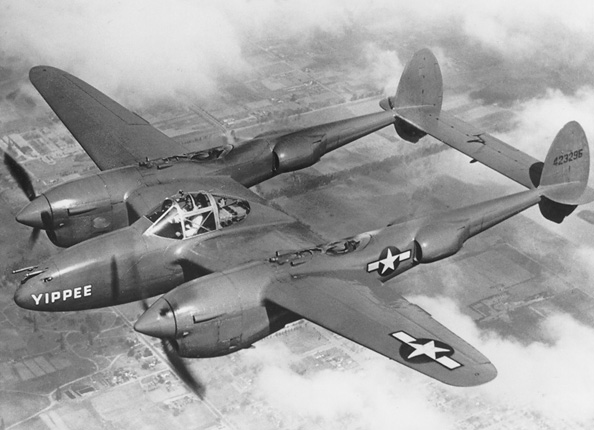
Lockheed P-38 Lightning was used in several roles such as- level bombing, dive bombing, night fighting, ground attack, photoreconnaissance missions and most extensively as long range escort fighter equipped with drop tanks under its wings.
It was most successful in the WWII Pacific Theater of Operations and in the India-China-Burma Theater of Operations. Top U.S. ace pilots Richard Bong (40 victories) and Thomas McGuire (38 victories) both achieved their aerial victories in the P-38. Until the introduction of a huge number of P-51D Mustangs toward the end of the war, P-38 was the main long range fighter aircraft of U.S. Army Air Forces in the South West Pacific Theater.
For a fighter aircraft, P-38 was unusually less noisy. Its exhaust is muffled by the turbo superchargers or forced induction devices which increase engine efficiency by forcing extra air into the engine combustion chamber. The P-38 was the only U.S. fighter aircraft in production throughout U.S. involvement in the war.
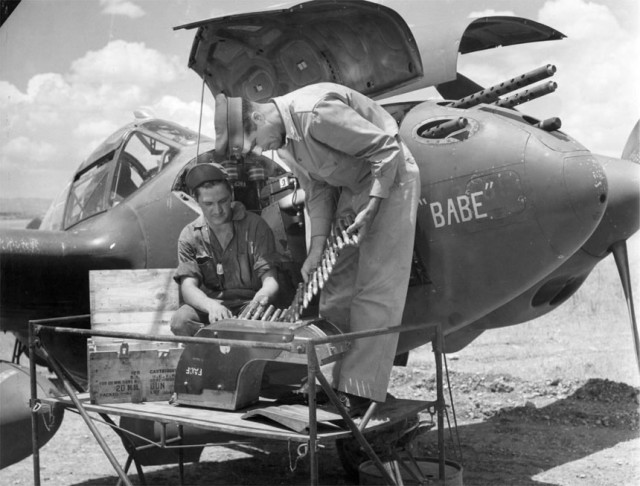
Total 10,037 P-38s were produced including 18 distinct models and per unit cost of the aircraft was $97,147 in 1944. It had a top speed of 713 Kmph or 443 mph and was 100 mph faster than any other aircrafts during its introduction. Lockheed XP-49 (introduced in November 1942) & Lockheed XP-58 (introduced in June 1944) were the two upgraded versions of P-38.
In a single minute, P-38s could climb 3,300 ft. It had a cruise speed of 443 kmph or 275 mph. Cruise speed is the speed of aircraft where the flight is most fuel efficient. The P-38’s length was 32ft or 12m and wing span 52ft or 16m. Liquid cooled Allison V-1710 engine was used in it.
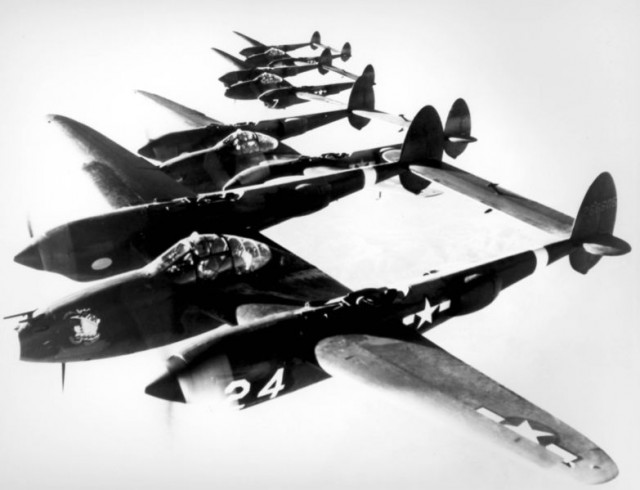
The Lockheed P-38 Lightning also doubled the threatening long-range capabilities up to 1,150 miles. It was also capable of carrying a larger payload than the B-17s.
Chief engineer of Lockheed Corporation, Hall Hibbard and his then assistant Kelly Johnson, the renowned U.S. aeronautical innovator & system engineer, designed the Lockheed P-38 Lightning in 1937. First of its prototype XP-38 first flew on 27th January 1939.
The armaments of the P-38 were concentrated in the nose of the aircraft unlike most of the U.S. aircrafts which had wing-mounted guns. This design helped it reduce pattern convergences and thus increased gun range. It could shoot targets at ranges up to 1,000 yards or 914 meters. The guns were a potent mix of four 0.50 caliber (.50 in or 12.7 mm) machine guns and a 20 mm (.79 in) Hispano Suiza HS .404 auto cannon.
Innovation Stories section of website of American global aerospace, security, defense & advanced technology company Lockheed Martin reported on the remarkable feats of the Lockheed P-38 Lightning aircrafts during the WWII. Like a natural force, the P-38 was unforeseen, fast and immensely powerful. On 14th August 1942, an American pilot in his P-38 peeled down from the skies over Iceland. Target of the aircraft was a German Focke-Wulf Fw 200 Condor patrol bomber, a German long-range, all-metal & four-engine aircraft. The German crew had never encountered any aircraft quite like it before.
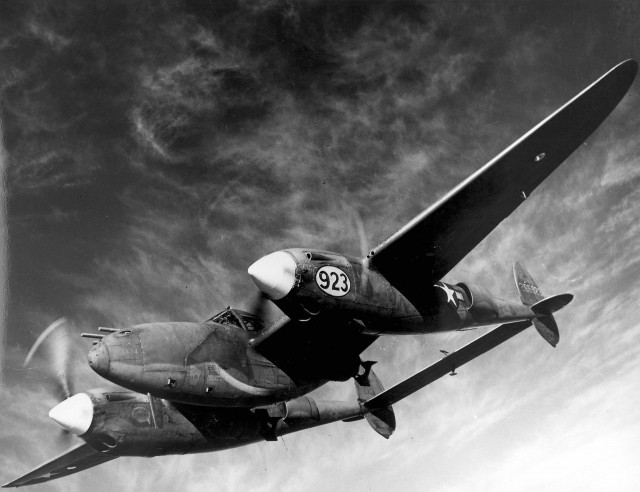
The distinctive design made the P-38 sleek and its pilot was shooting 400 rounds per minute from its nose mounted machine guns. The Nazi Condor was dispatched in seconds and it marked the first successful U.S. engagement of a German aircraft during the WWII.
The P-38 showed its versatility in North Africa within 6 months. Then a hysterical German pilot surrendered to the Allied troops at an Allied camp near Tunisia while pointing up to the sky and repeating one phrase over and over again- ‘der Gabelschwanz Teufel’ or the fork tailed devil!
The ruggedness and versatility of the P-38 was legendary. It raided enemies on the ground, had the capabilities of sinking ships, crippled tanks, destroyed pillboxes and shot down numerous bombers and fighter aircrafts in all theaters of the WWII.
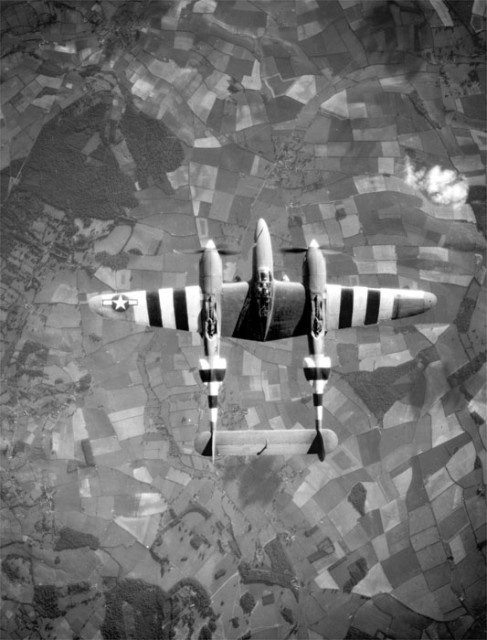
A modified P-38 was chosen for the first round trips of Allied mission to Berlin. In 1943, American code breakers learned of an inspection flight in the Pacific by Japanese admiral Isoroku Yamamoto, the architect of the attack on Pearl Harbor U.S. base. 16 P-38G aircrafts were quickly sent to fly a five-leg, about 1,000 mile-long assignment (Operation Vengence) to intercept Yamamoto and his escort of 6 Mitsubishi A6M Zero fighters and 2 Mitsubishi G4M1 bombers.
The successful mission carried out by the P-38Gs ensured death of 19 Japanese combatants including Yamamoto. Two Japanese bombers were also destroyed in the raid. 1 P-38G was lost and 1 American pilot also got killed during the mission. The Allied morale soared while Japanese naval moral was crushed after the raid. It also set the stage for an Allied victory in the Pacific theater of the warfare.
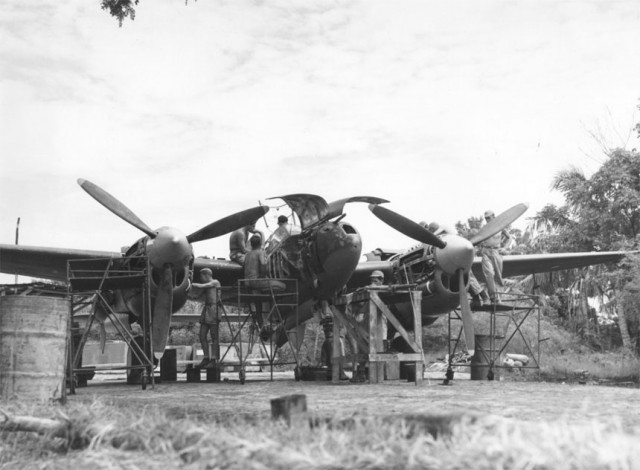
Lockheed P-38 Lightning’s legacy remains unmatched as it carried out more than 130,000 missions in different theaters around the globe. P-38 pilots shot down more Japanese aircrafts than any other fighter and took more than 90% of the Allied aerial reconnaissance photographs over Europe. P-38s retired from U.S. Air Force in 1949. The last P-38 retired in 1965 in Honduras.
A P-38 test pilot Colonel Ben Kelsey summed up the war bird’s legacy. He said ‘(That) comfortable old duck would fly like hell, fight like a wasp upstairs and land like a butterfly.’
Video story: Documentary on WWII American fighter aircraft Lockheed P-38 Lightning
